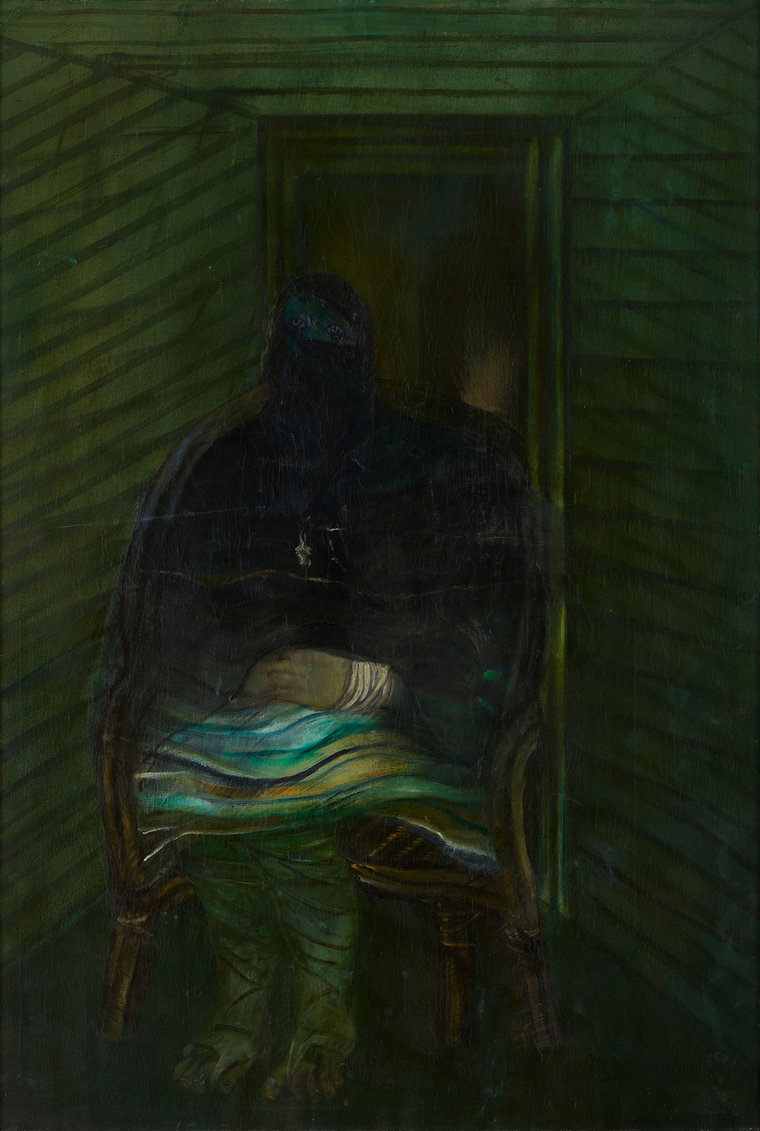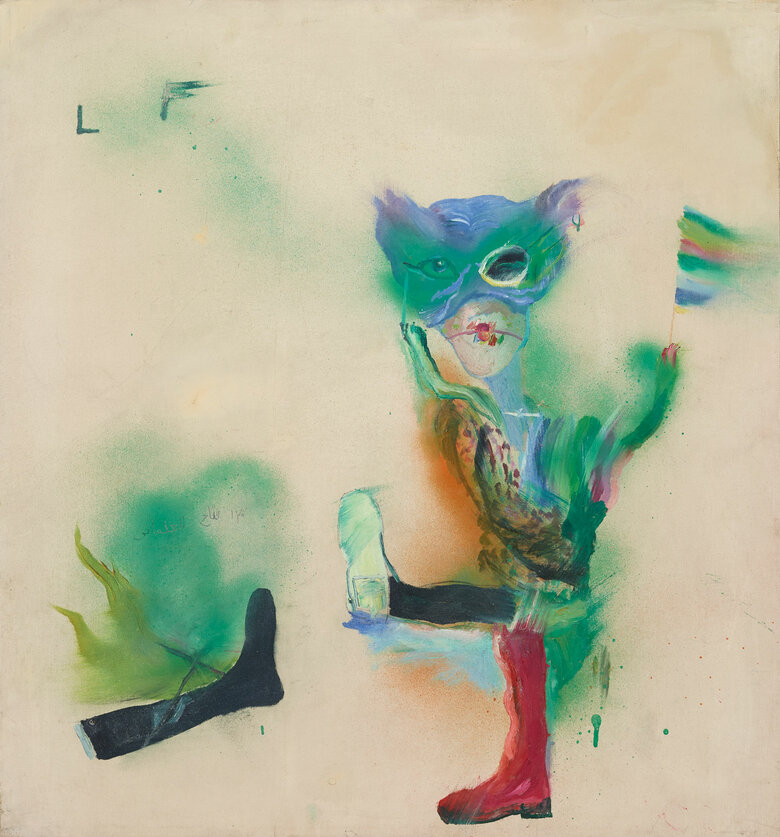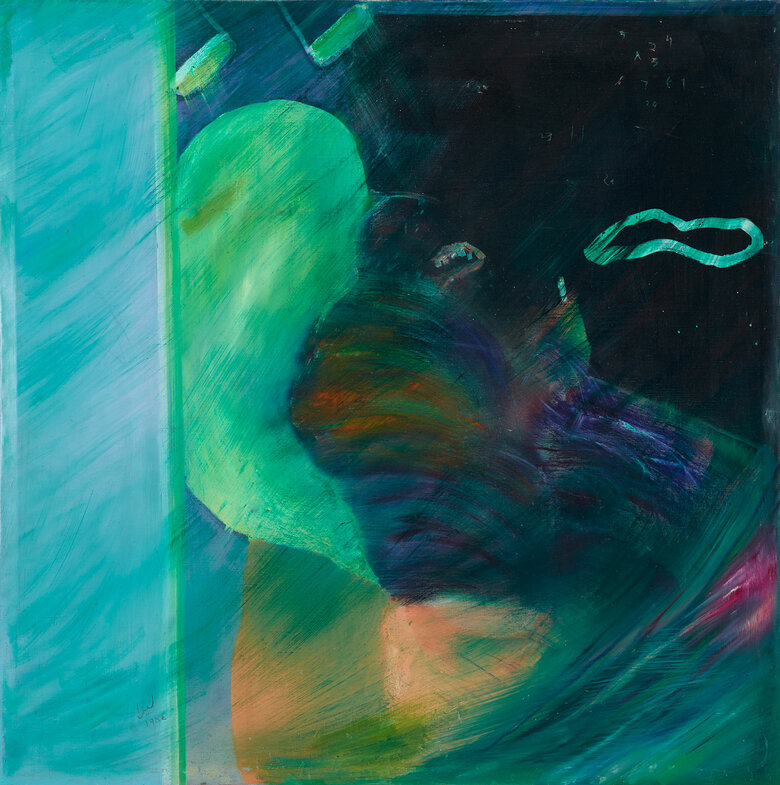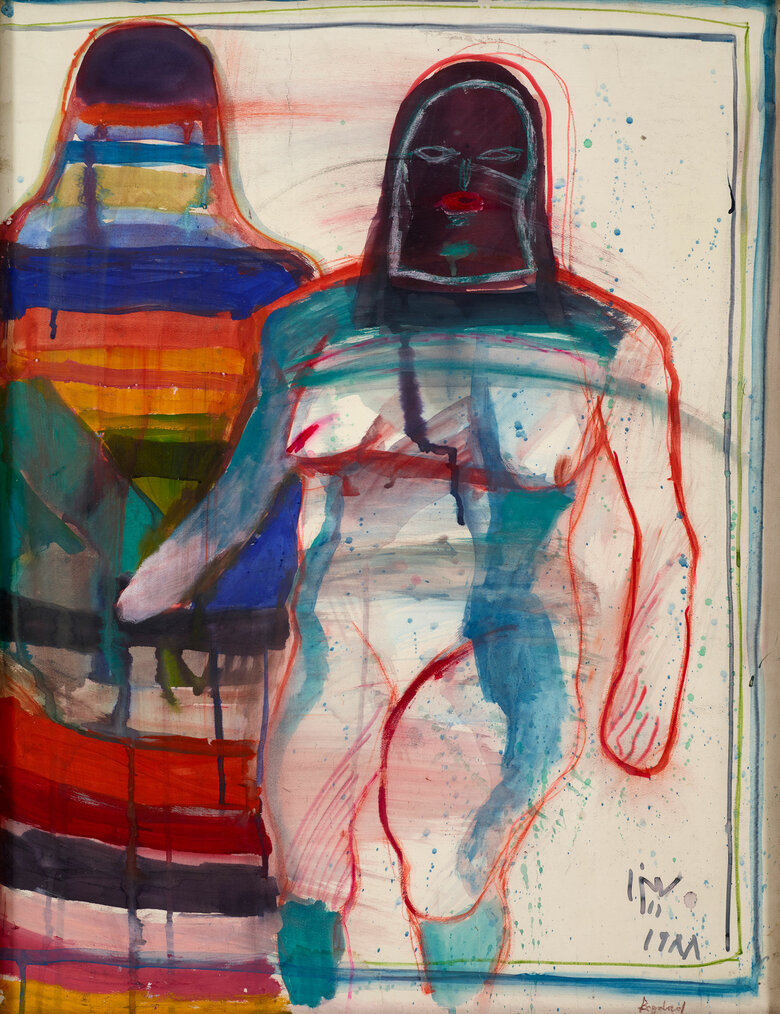Untitled, 1986, by Lisa Fattah, a German-Swedish artist, is a haunting meditation on solitude, confinement, and erasure. Painted in acrylic on canvas, the work features a veiled figure seated in an enclosed, dimly lit space. The flowing fabric of the figure’s clothing distorts its form, blurring its boundaries in relation to its environment. Deep emerald green hues dominate the scene, creating an oppressive atmosphere where the figure appears to dissolve into its surroundings. There is a barely visible face obscured beneath layers of darkness, where only the eyes peer through. Shadows stretch across the walls, reinforcing the sense of entrapment.
Originally of German-Swedish origin, Fattah moved to Iraq in the 1960s with her husband Ismael Fattah and made it her home. There are some commonalities between her style and her husband’s, namely in relation to the depiction of human figures in their works: both artists allow their subjects – in their reduced shapes and forms – to merge and blend with their surroundings, and many of their figures share similar facial features that draw upon Sumerian heritage. A major difference is that while Ismael Fattah’s work is often responding directly to the political context, Lisa Fattah privileges the human and personal experience more. Having said that, while not overtly nationalistic, her works still engaged deeply with the Iraqi context. Through her expressionist style, she depicted her anger at the suffering of the Iraqi people. Her work focused on bringing out a more raw and profoundly human experience that is localized in relation to her context, while also projecting a universality that is accessible to all.
Here, Fattah’s exploration of isolation extends beyond the individual, highlighting themes of domestic space as a site of psychological tension. The interior setting is rigid and confining, while the chair, walls, and doorway create a structured but suffocating environment. The background doorway, hinting at a distant light, suggests an unreachable escape. The woman in the chair is wrapped tightly in what appears to be medical gauze under her abaya. She sits alone in the darkness, most likely in pain, seemingly stuck in her own world of isolation. The reasons for her confinement are not necessarily only physical – the only clear element is her inability to escape or to even be free inside the walls of this domestic space. Even the eyes, the only part of this woman’s body that is distinct, stare off into the corner instead of engaging with the viewer.
Fattah’s works often depict distorted, fragmented bodies, capturing a deep sense of alienation. Here, the body is weighed down, absorbed into its setting, its form dissolving into the surrounding darkness. The green tones, layered with streaks of yellow and brown, add to the feeling of decay, reinforcing themes of deterioration and disappearance. Fattah’s later works grew increasingly introspective, shaped by both personal upheaval and political turmoil. As a result, this piece is not merely a depiction of solitude but a reflection on invisibility – caught between existence and obscurity.
Signed and dated in Arabic on reverse












